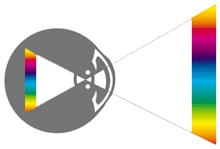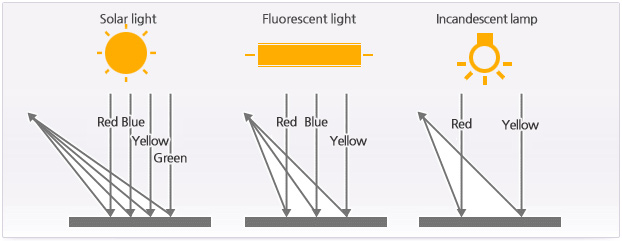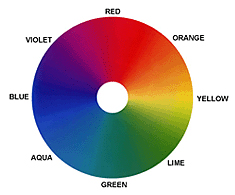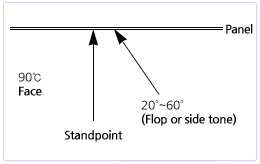Guide | (Auto) How to match colors
본문
How to match colors
We strengthen the global competitiveness through an independent color mixing system and perfect color matching.

Light Theory
A color that we can see is decided according to the amount and kind of light wave returning from a surface. When the reflected light reaches the retina of eyes, it turns into an electronic shock and makes the brain distinguish colors. Also, the color can be recognized differently according to the light source because solar light has all lights (red, yellow, blue, green light) which can be seen in eyes but fluorescent light has only blue, yellow and red light, and incandescent lamp has only yellow and red light.

Hue circle theory

There are 8 different colors in the hue circle. In other words, color group 1 (basic color) has blue, red, yellow and green.
Color group 2 (mixed color) has purple, orange, yellowish green and bluish green.
Color group 2 is made by mixing two colors of color group 1. For example, purple is made with red and blue.
Orange is made with yellow and red. Yellowish green is made with yellow and green. Bluish green is the mixture of blue and green.
Adjacent colors : You get a vivider color when mixing neighbouring colors in the hue circle.
Complementary color, contrast color : A turbid color is created when mixing opposite colors in the hue circle. Also, color difference may occur depending on the light source.For example, using green to lessen red feeling, or using yellow to lessen blue feeling makes a turbid color.Thus try not to mix like this.
Terms
1) When comparing color difference, always distinguish it with 3 characteristics below.
- * Cast : Refers to red tone, yellow tone, blue tone, green tone, etc. A color has tones from 2 directions. Red can have blue or yellow tone and cannot have green tone. Orange can have red or yellow tone and cannot have blue or green tone.
- * Depth(Brightness) : For solid colors, depth stands for the degree of black and white. For metallic colors, it means brightness and darkness of the color.
- Chroma(Grayness) : Refers to vividness and turbidness of a color

2) When comparing the difference of colors, the angle is classified by 2 angles as below.
- Front (Face) - See panel at an angle of 90˚.
- Side (Flop) - See panel at an angle of 20˚-60˚.
Consideration before color matching
1) There are several things to consider before color matching, especially for metallic colors.
| Thinning | Lack of thinner : vivid | Excessive thinner : turbid |
|---|---|---|
| Air | High : brighter | Low : dark |
| Room temperature | High : brighter | Low : dark |
| Spray gun | High air pressure : bright and soft | Low air pressure : dark and rough |
| Spraying method | Mist spray : bright | Wet-coat spray : dark |
| Thinner | Fast thinner : bright | Slow thinner : dark |
2) Three basic questions you need to answer before color matching
- How would you describe color difference? = What has been compared between car and paint?
- How much are you going to add? = It is better to add small amount than adding a lot.
Remember to match the color by adding small amount. - How will the color change when this toner is added?= A toner influences at least two characteristics of the color.
It affects color tone and depth, or color tone and chroma.
Rules for color matching
1) Follow 5 rules listed below.
- You can get a vivider color when mixing neighbouring colors in the hue circle.
- Avoid using a contrast color. It could be the reason of a muddy color and color difference.
- Avoid adding 2 colors at the same time. Set color tone first and then set brightness and chroma.
- Avoid using premixed colors. Only use original toners.
- If possible, use only half of mixed paint and store the remaining half to use it as a standard later.
2) Adjustment of color tone influences brightness and chroma.
- Color tone must be adjusted at the very beginning and get ready for the next step.
3) Color inspection
- Comparing area must be clean and glossy. Polish the comparing part.
- Check whether there is metallic or mica in the film. Is it on topcoat or basecoat? Is it uniform? Is it a stain?
- Check the paint inside the can. Apply it on a testing panel for accurate color matching.
Check the color after it is fully dried. - It is best to check the color under natural sunlight.
- Every color has to be compared at a same gloss level. Apply clearcoat on basecoat for a final check.
- Check the color from various angles(face and flop). A vehicle must be checked from an angle of 90°(face) and 20°-60°(flop).
- Check if color adjustment is possible.
- If it is not a broken panel, check if the color can be adjusted through blending process.
- Check if the color has been matched close enough.
※If you could answer 'Yes' to any of above questions, no further adjustment is needed.
Variables during color matching
| 1) How to make color bright | 2) How to make color dark |
|---|---|
| Use fast reducer. | Use slow reducer or add retarder thinner. |
| Use lots of reducer. | Use less reducer than normal. |
| Keep far distance between spary gun and panel. | Keep close distance between spray gun and panel. |
| Increase gun speed. | Decrease gun speed. |
| Increase flash time between applications. | Shorten flash time between applications. |
| Increase air pressure. | Decrease air pressure. |
| Increase fan width. | Decrease fan width. |
| Decrease discharge rate. | Increase discharge rate. |
| Use small fluid tip. | Use large fluid tip. |
| Increase the air flow or temperature. | Wet-on-wet application |


